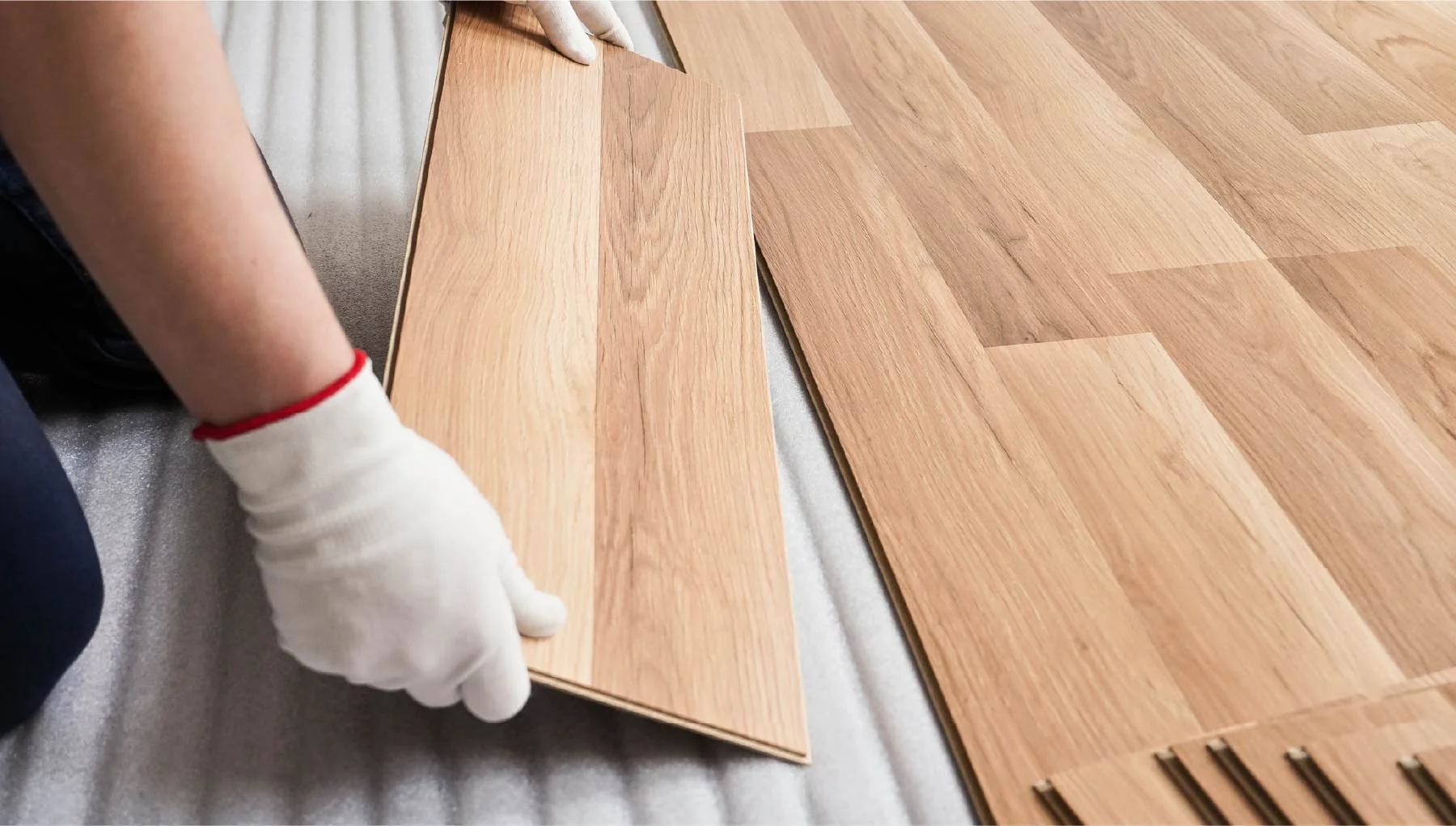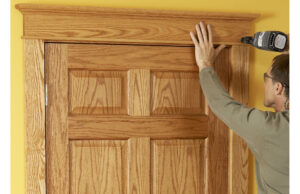
Decoding Flooring Choices: Unveiling the Differences Between Laminate and Vinyl Flooring
Introduction
Choosing the right flooring for your home involves a careful consideration of various factors, and two popular options are laminate and vinyl flooring. While these materials share similarities, they also have distinct characteristics that can impact your decision. In this comprehensive guide, we’ll explore how to tell the difference between laminate and vinyl flooring, providing insights into their composition, appearance, installation, and maintenance.
Understanding Laminate Flooring
Composition: Laminate flooring consists of multiple layers that are fused together through a lamination process. The layers typically include a high-density fiberboard (HDF) core, a photographic layer that mimics the appearance of wood or stone, and a protective wear layer made of resin.
Appearance: Laminate flooring often replicates the look of hardwood or stone with a high-quality photographic layer. It is available in a wide range of styles, colors, and patterns, allowing for versatile design options.
Installation: Laminate flooring is typically installed using a click-and-lock system. Planks or tiles easily snap together, creating a floating floor that does not require adhesive. Underlayment is often recommended for added comfort and noise reduction.
Maintenance: Laminate flooring is known for its durability and resistance to scratches and stains. Regular maintenance involves sweeping or vacuuming to remove debris, and occasional damp mopping is suitable for cleaning.
Understanding Vinyl Flooring
Composition: Vinyl flooring is composed of layers of PVC (polyvinyl chloride), fiberglass, and a wear layer. The wear layer, which contains the printed design, is coated with a protective finish to enhance durability.
Appearance: Vinyl flooring comes in various styles, including wood, stone, and tile looks. The design is printed on the wear layer, providing a realistic appearance. Additionally, vinyl flooring may have texture to mimic the feel of natural materials.
Installation: Vinyl flooring installation methods include glue-down, peel-and-stick, and click-and-lock systems. Glue-down is a traditional method, while peel-and-stick and click-and-lock options are popular for DIY projects.
Maintenance: Vinyl flooring is resistant to water, making it suitable for bathrooms and kitchens. Regular maintenance involves sweeping or vacuuming, and damp mopping is effective for cleaning. It is crucial to avoid harsh chemicals that may damage the protective layer.
How to Tell the Difference
1. Material Composition
a. Laminate:
- Core Material: Laminate has an HDF core, which is a high-density fiberboard.
- Photographic Layer: The photographic layer on top mimics the appearance of wood or stone.
- Wear Layer: A transparent wear layer made of resin protects the surface.
b. Vinyl:
- Layers of PVC: Vinyl flooring is made of layers of PVC (polyvinyl chloride) and a wear layer.
- Fiberglass Layer: Some vinyl flooring options may include a layer of fiberglass for added stability.
- Wear Layer: The top wear layer contains the printed design and a protective finish.
2. Visual Appearance
a. Laminate:
- Design Options: Laminate offers a broad range of design options, including wood, stone, and tile looks.
- Realistic Appearance: The photographic layer provides a realistic appearance, and the high resolution enhances the details.
b. Vinyl:
- Versatile Styles: Vinyl flooring comes in various styles, offering wood, stone, and tile visuals.
- Textured Surface: Some vinyl options have textured surfaces to replicate the feel of natural materials.
3. Installation Methods
a. Laminate:
- Click-and-Lock System: Laminate typically features a click-and-lock system, allowing planks or tiles to snap together.
- Floating Installation: The click-and-lock installation creates a floating floor, meaning it is not glued or nailed down.
b. Vinyl:
- Glue-Down: Traditional glue-down installation involves adhering the vinyl to the subfloor with adhesive.
- Peel-and-Stick: Vinyl with a peel-and-stick backing is suitable for DIY installations.
- Click-and-Lock: Some vinyl options feature a click-and-lock system, similar to laminate.
4. Water Resistance
a. Laminate:
- Water Resistance: Laminate is not inherently waterproof, and prolonged exposure to moisture may cause damage.
- Water-Resistant Options: Some laminates are designed to be water-resistant, but caution should still be exercised.
b. Vinyl:
- Waterproof Properties: Vinyl flooring is inherently resistant to water, making it suitable for wet areas like bathrooms and kitchens.
- Ideal for Moist Environments: Vinyl is an excellent choice for areas prone to spills and humidity.
Frequently Asked Questions:
Q1: Can laminate flooring be installed in bathrooms or kitchens?
A1: While some laminates are water-resistant, they are not waterproof. It is generally not recommended to install laminate in areas with high moisture, such as bathrooms or kitchens.
Q2: Is vinyl flooring suitable for high-traffic areas?
A2: Yes, vinyl flooring is known for its durability and is suitable for high-traffic areas. The wear layer provides protection against scratches and stains.
Q3: Does laminate flooring feel like real wood underfoot?
A3: Laminate flooring may not replicate the authentic feel of real wood as much as vinyl does. The surface is typically harder and less yielding compared to real wood.
Q4: Can I install vinyl flooring over existing tile or hardwood?
A4: In many cases, vinyl flooring can be installed over existing tile or hardwood. However, it is essential to follow manufacturer guidelines and ensure a level surface.
Q5: What is the average lifespan of laminate flooring?
A5: The lifespan of laminate flooring varies based on factors such as quality, maintenance, and wear. On average, well-maintained laminate flooring can last 15-25 years.
Q6: Is underlayment necessary for vinyl flooring installation?
A6: While some vinyl flooring options have built-in underlayment, others may require a separate underlayment for added comfort and noise reduction.
Q7: Can I use a steam mop on laminate or vinyl flooring?
A7: It is not recommended to use a steam mop on laminate flooring, as excessive moisture may cause damage. Vinyl flooring is more tolerant of moisture, but it is advisable to check with the manufacturer.
Q8: Do laminate and vinyl flooring emit VOCs (volatile organic compounds)?
A8: Some laminate and vinyl flooring products may emit low levels of VOCs. Choose products labeled as low-VOC or meet specific environmental certifications for reduced emissions.
Q9: Can I refinish or sand laminate or vinyl flooring?
A9: Laminate and vinyl flooring are not designed for refinishing or sanding. Damaged areas are usually replaced rather than refinished.
Q10: How do I clean and maintain laminate and vinyl flooring?
A10: Regular sweeping or vacuuming is recommended for both laminate and vinyl flooring. Damp mopping with a manufacturer-approved cleaner is suitable for cleaning, avoiding excessive moisture.
Conclusion
Distinguishing between laminate and vinyl flooring involves understanding their composition, appearance, installation methods, and performance characteristics. Whether you prioritize a realistic wood look, water resistance, or ease of installation, the choice between laminate and vinyl flooring ultimately depends on your specific needs and preferences. Use this guide to navigate the differences and make an informed decision when selecting the perfect flooring for your home.


